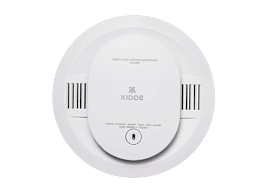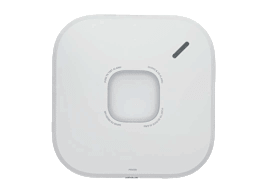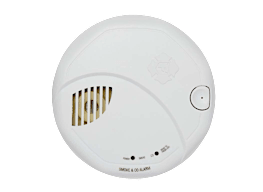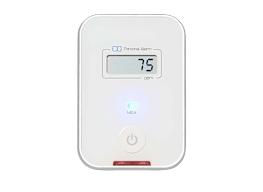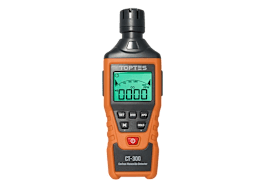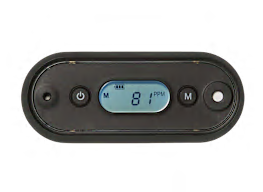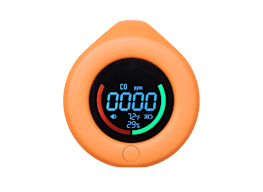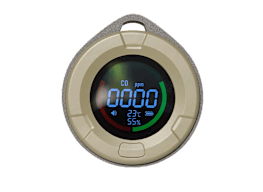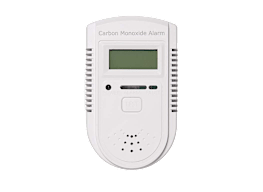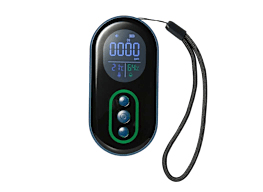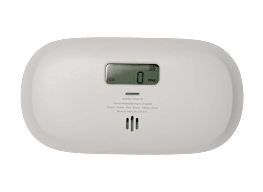
Smoke & Carbon Monoxide Detector Buying Guide

Senior Home & Appliances Writer

Home & Tech Writer
Installing and maintaining smoke and carbon monoxide (CO) detectors can save your life. Fortunately, they’re inexpensive and easy to put in place. Basic smoke detectors cost as little as $15 and carbon monoxide detectors cost as little as $20.
Newer models offer more features. For example, some communicate with one another and provide integrated, whole-house protection. With such a system, when one detects smoke or carbon monoxide, all of them sound, whether the detectors are hardwired or wirelessly connected.
How We Test Smoke and Carbon Monoxide Detectors
Each smoke and carbon monoxide detector that enters Consumer Reports’ labs is rigorously tested to make sure it will keep you and your family safe. For a smoke detector, we test response time to both flaming fires and smoky, smoldering fires. Historically, not all detectors have adequately detected both, though many now come equipped with multiple sensors to help with that.
We test carbon monoxide detectors against low CO levels (100 parts per million) and high CO levels (400 ppm). We also test the accuracy of their carbon monoxide measurements if they offer readings via a digital display or audio announcements.
Combination detectors go through both sets of tests. All of the results are then folded into our comprehensive smoke and carbon monoxide detector ratings. (Ratings of lifesaving products like these are now available to everyone free of charge.)
Types of Smoke and Carbon Monoxide Detectors
You can find individual smoke detectors and carbon monoxide detectors, as well as combination smoke and carbon monoxide detectors in smart and non-internet-connected forms. All detector types offer stand-alone and interconnected varieties. We recommend that you use a combination of detectors in your home for complete protection.
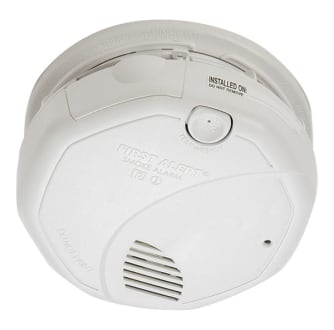
Smoke Detectors
Fires burn differently; some flare, some smolder. The kind of sensor that a smoke detector uses determines what kind of fire it’s better at detecting. Detectors with multiple sensor types (dual-sensor or multicriteria detectors) are typically better at alerting you to both flaming and smoldering fires.
Ionization smoke detectors are best at detecting the small particles typical of fast, flaming fires, but they’re poor at detecting smoky, smoldering fires. And ionization units are prone to false alarms from burnt food and steam, so don’t mount them near a kitchen or bathroom.
Photoelectric smoke detectors are best at detecting the large particles typical of smoky, smoldering fires, but they’re poor at detecting fast, flaming fires. These units are less prone to false alarms from burnt food, so they may be better around kitchens.
Dual-sensor smoke detectors combine ionization and photoelectric technology to detect both flaming and smoldering fires, keeping you safer and saving you the hassle of installing two separate smoke detectors.
Multicriteria smoke detectors rely on multiple sensor types and algorithms to better distinguish between flaming or smoldering fires and cooking smoke, therefore reducing pesky nuisance alarms. These reflect the latest industry standards.
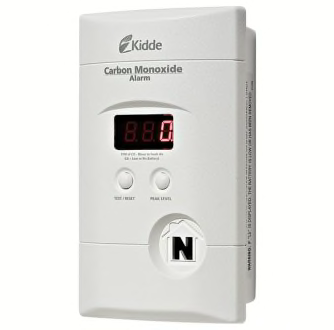
Carbon Monoxide Detectors
Carbon monoxide detectors use sensors to detect the presence of CO in your home. Some models include digital displays or audio announcements to tell you the level of CO they detect. And some models offer a peak memory feature, which logs the highest CO reading so that you can see if there was a problem while you were away from home. Remember that carbon monoxide detectors don’t detect smoke or explosive gases, such as natural gas, propane, and methane.
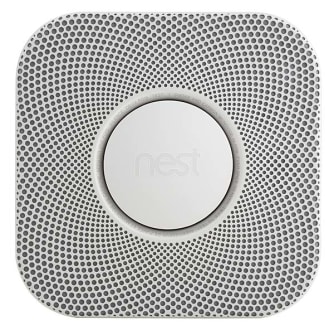
Combination Smoke & Carbon Monoxide Detectors
Combination detectors provide both smoke and carbon monoxide detection, though they vary by the type of smoke detection technology used. Both conventional (not internet-connected) and smart models are available.
Smart detectors offer additional features through a companion smartphone app. Features include smartphone alerts about smoke or CO (even when you’re not home) and low batteries, as well as the ability to hush alarms from your phone. Some models connect to the internet via WiFi; others require an additional bridge or hub, a stand-alone device that connects smart-home products to the internet.
How Many Smoke and CO Detectors Do You Need?
Smoke detectors are a must in all homes, and carbon monoxide detectors are needed for any home with fuel-burning appliances, such as a furnace, water heater, range, cooktop, or grill. Even those living in all-electric homes should install carbon monoxide detectors because CO can seep into the house from an attached garage or if a backup generator is used too close to your living quarters during a power outage.
You’ll need smoke detectors that detect flaming and smoldering fires for each bedroom, one outside each sleeping area, and at least one detector installed on each floor, including in a finished attic and in a basement. You should also have a carbon monoxide detector on each living level, outside each sleeping area, in a basement, and near (not inside) an attached garage.
Use the illustration below as a guide to where you need detectors, and tally up the number of smoke and carbon monoxide detectors you need to buy. Keep in mind that your home might need more or fewer detectors, depending on its size and number of rooms.
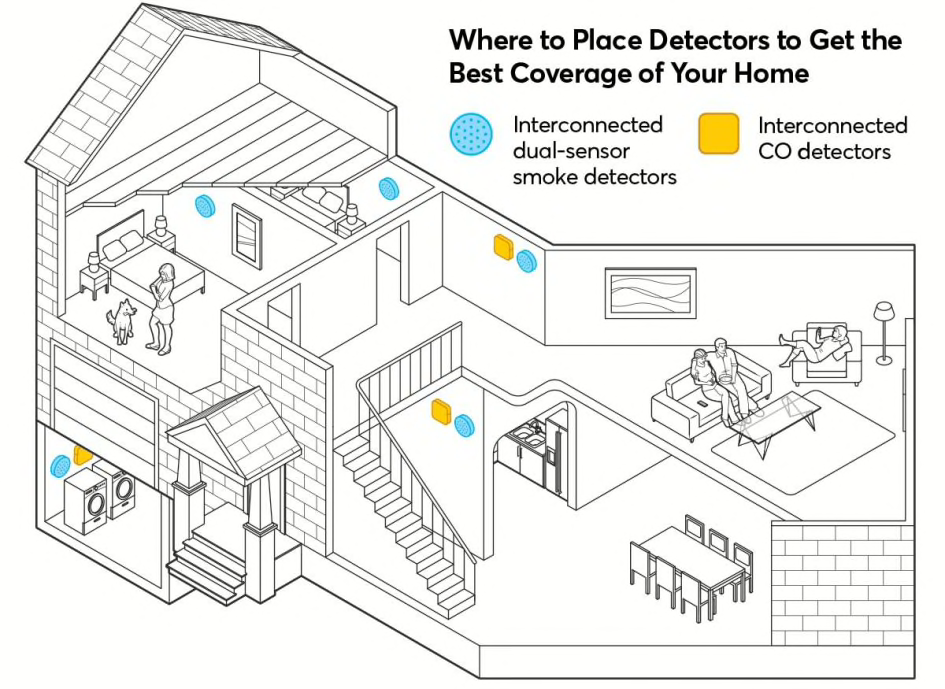
Chris Philpot Chris Philpot
How to Shop for Detectors
1. Check Local Regulations
Before you shop, check the regulations in your area. Your town or state might have specific requirements (you’ll need to know, say, when you sell your home) about what to use, including the types of detectors and their placement. Also, some insurance companies offer a discount for homes with smoke detectors.
2. Pick a Power Source
Hardwired smoke and carbon monoxide detectors tie into your home’s wiring—professional installation is required—and usually have backup batteries. Battery-only detectors are the simplest to install and work during a power failure. Some models use removable batteries that require annual replacement, while others use sealed lithium batteries that last the life of the detector. Plug-in detectors are also available, but electrical outlets are typically located low on the wall, while the optimal placement for the detector is on or near the ceiling.
3. Decide on Smart or Not
Smart smoke and carbon monoxide detectors give you the advantage of knowing if something’s wrong when you’re not home, but we haven’t found a smart smoke and CO detector that successfully does it all. If you decide to outfit your home with this type, we recommend also installing additional dual-sensor smoke detectors. Smart detectors, whether hardwired or battery-powered, will also interconnect with other detectors of the same model. There aren’t many smart models on the market, but that’s likely to change.
4. Look for the UL Certified Stamp
Check the detector packaging for a UL-certified label to make sure it has passed UL Solutions testing. You should also look for the date of manufacture printed on the back of the detector. Devices lose their sensitivity over time, so the fresher, the better. As a general rule, replace carbon monoxide detectors every five years and smoke detectors every 10 years. As of this summer, UL Standards & Engagement, the branch of the former Underwriters Laboratories that focuses on setting standards, now also requires certified smoke detectors to better distinguish between cooking smoke and smoldering or flaming fires, which may reduce the triggering of nuisance alarms.
5. Look for Interconnected Detectors When Available
You can interconnect some smoke and carbon monoxide detectors so that all units in the house sound an alarm when any single one is triggered. Some newer homes may have wiring already in place to link them. In a home without such wiring, you can buy detectors that interconnect wirelessly. These interconnected smoke and carbon monoxide detectors are an important safety feature in a home with multiple levels, although stand-alone detectors may be adequate for a small, single-level home.
While interconnected alarms can make your home safer, they have some limitations. In many cases, interconnected alarms can interconnect only with models made by the same brand. In fact, Richard Roux, the senior electrical specialist for the National Fire Protection Association, says you should always check with the manufacturer to see which specific models are compatible even within the same brand, because some brands change their interconnect system over time.
Despite the limitations, we recommend using interconnected detectors. They can make your home much safer by alerting you to danger before the fire or CO spreads. Roux adds that interconnected alarms (whether hardwired or wireless) are also becoming a requirement in many states when homes are put on the market.
6. Consider Voice Alerts
Children tend to sleep more deeply than adults and might not awaken to a conventional alarm. Some smoke detectors and combination smoke and carbon monoxide detectors use a voice command, but whether that’s the most effective way to wake children hasn’t been determined. According to one study, a greater percentage of children ages 6 through 12 awoke to the sound of their mother’s prerecorded voice than to a tone alarm.
7. Consider Your Security System
You can incorporate some smoke and carbon monoxide detectors into a security system that sounds an alarm outside and inside the house. Some systems, such as Ring Alarm, even let you keep your existing detectors by adding an alarm listening device, which triggers the security system when it “hears” your detectors go off. These systems may also have a monitoring service that can notify the police or fire department, or even call your cell phone.
Features You’ll Find
The latest smoke and carbon monoxide detectors have added features to protect you and your family better. Here’s what to consider when matching the safest combination of detector options to your household’s needs.
- 1
- / 5
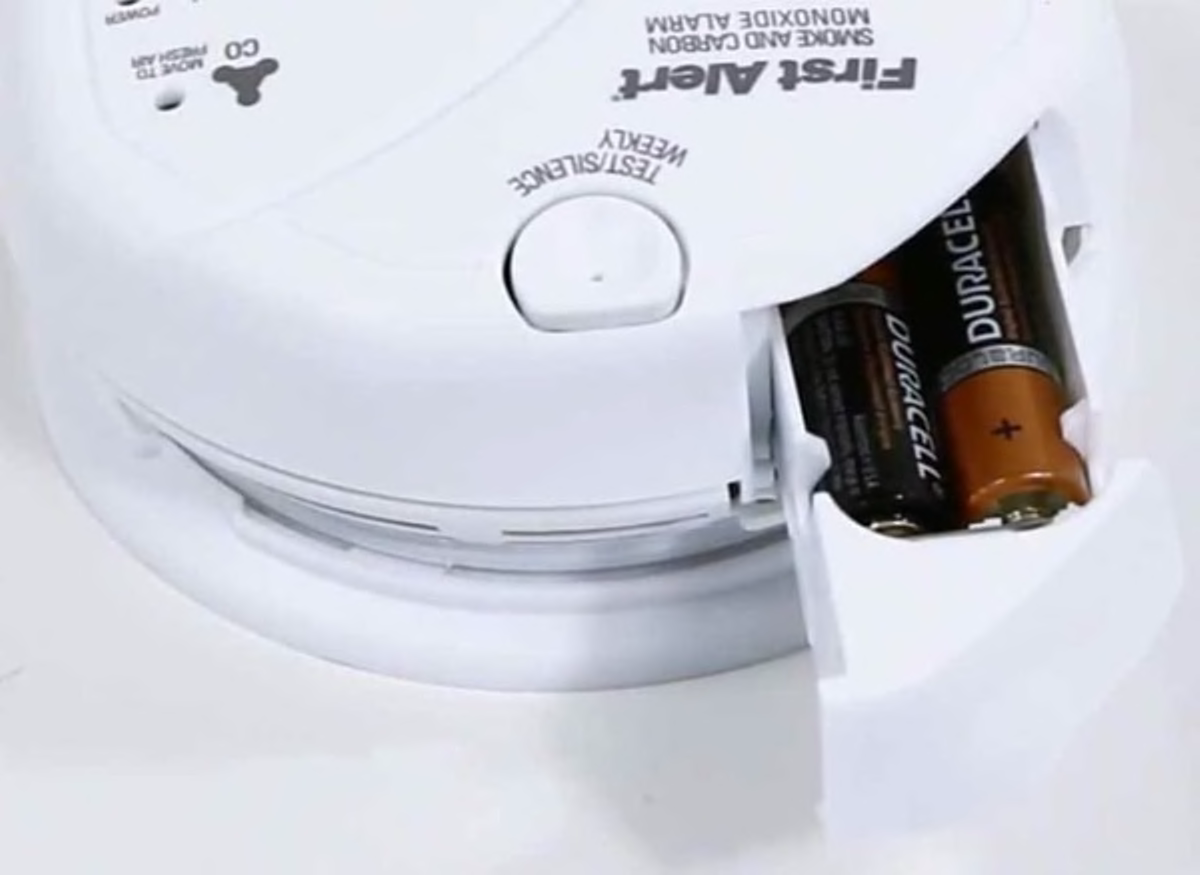
Battery Backup
A backup battery for hardwired smoke and carbon monoxide detectors offers security in case of a power failure. All battery-powered smoke and carbon monoxide detectors warn you when the battery is low using warning chirps, a low-battery voice message, or a visual display.

Smartphone Alerts From Smart Detectors
Smart smoke and carbon monoxide detectors connect to smartphone apps that can alert you when detectors go off, even if you’re not home. They will also let you know when batteries are running low so that you can avoid pesky chirping.
PHOTO: NEST
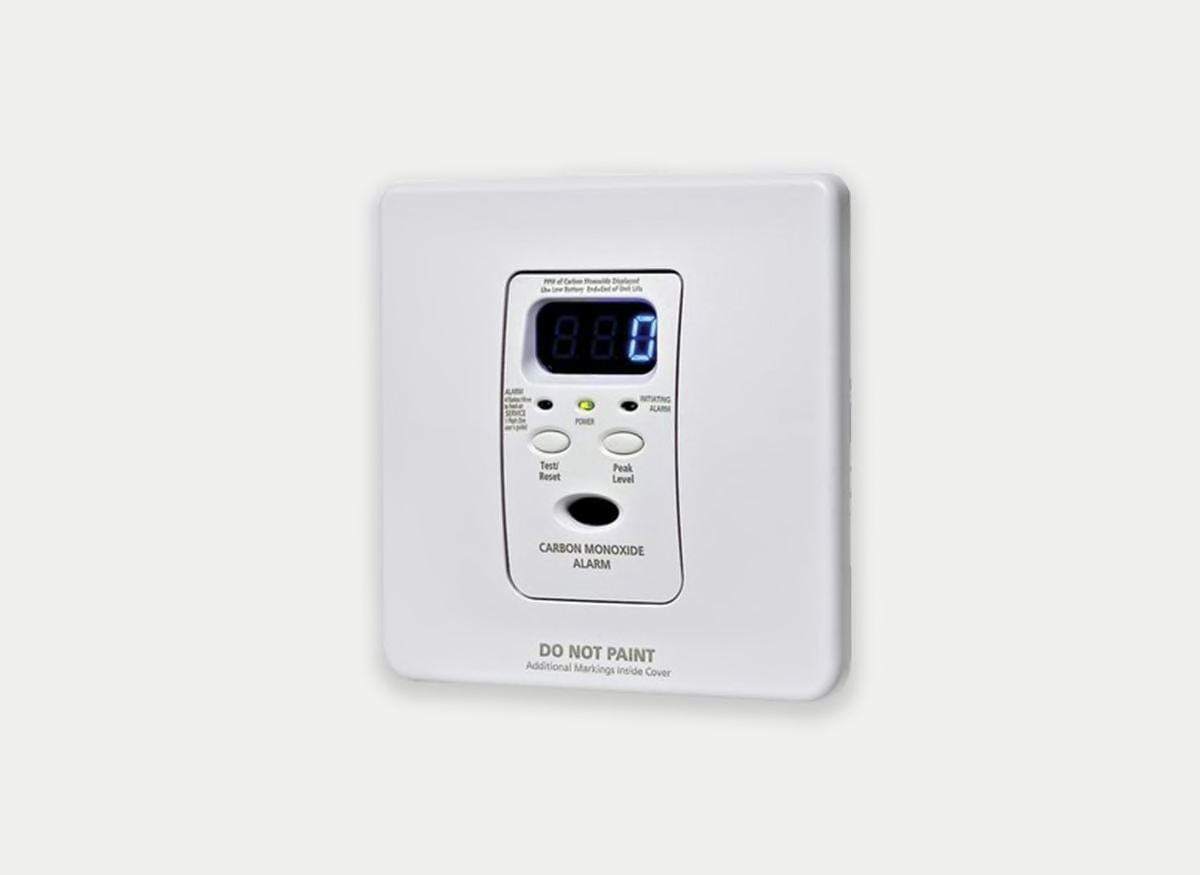
Digital Carbon Monoxide Display
This feature displays carbon monoxide concentrations in parts per million, even when the concentrations are below the level that triggers the detector. Carbon monoxide detectors certified by UL Solutions must go off at no less than 70 ppm, but lower amounts may harm heart patients. The display can alert you if the carbon monoxide level is inching up or is higher than usual. Some also show the peak level since they were reset, warning you of any spikes that occurred while you were away. Expect to pay a little extra for this feature: $5 or $10 for stand-alone detectors and slightly more for smart detectors.
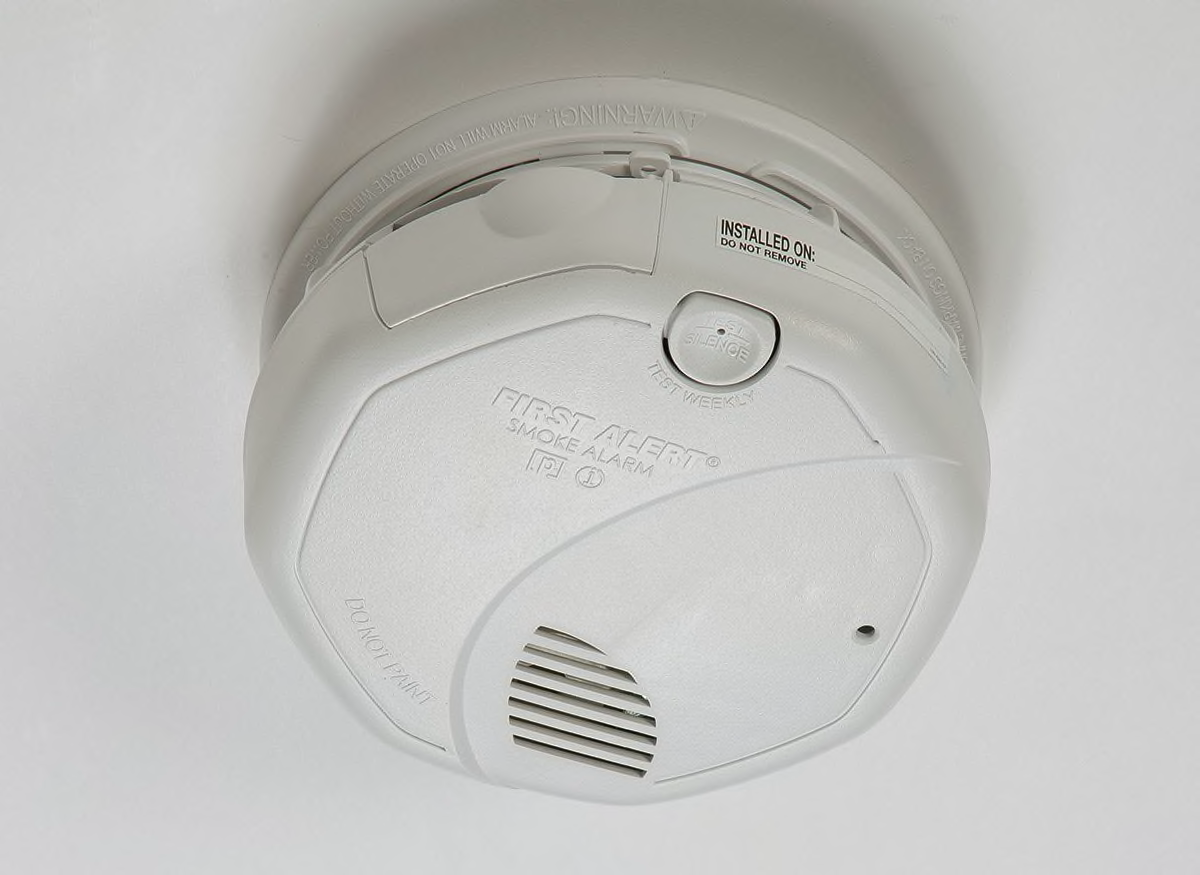
Hush Button
To silence a nuisance smoke detector, pressing a hush button is more convenient than disabling the unit, and it avoids the possibility of forgetting to turn it back on. All the smoke detectors we’ve recently tested have this feature. Some carbon monoxide and combination smoke/CO detectors can work with a remote control to silence a nuisance alarm (or a smartphone app, for smart detectors).
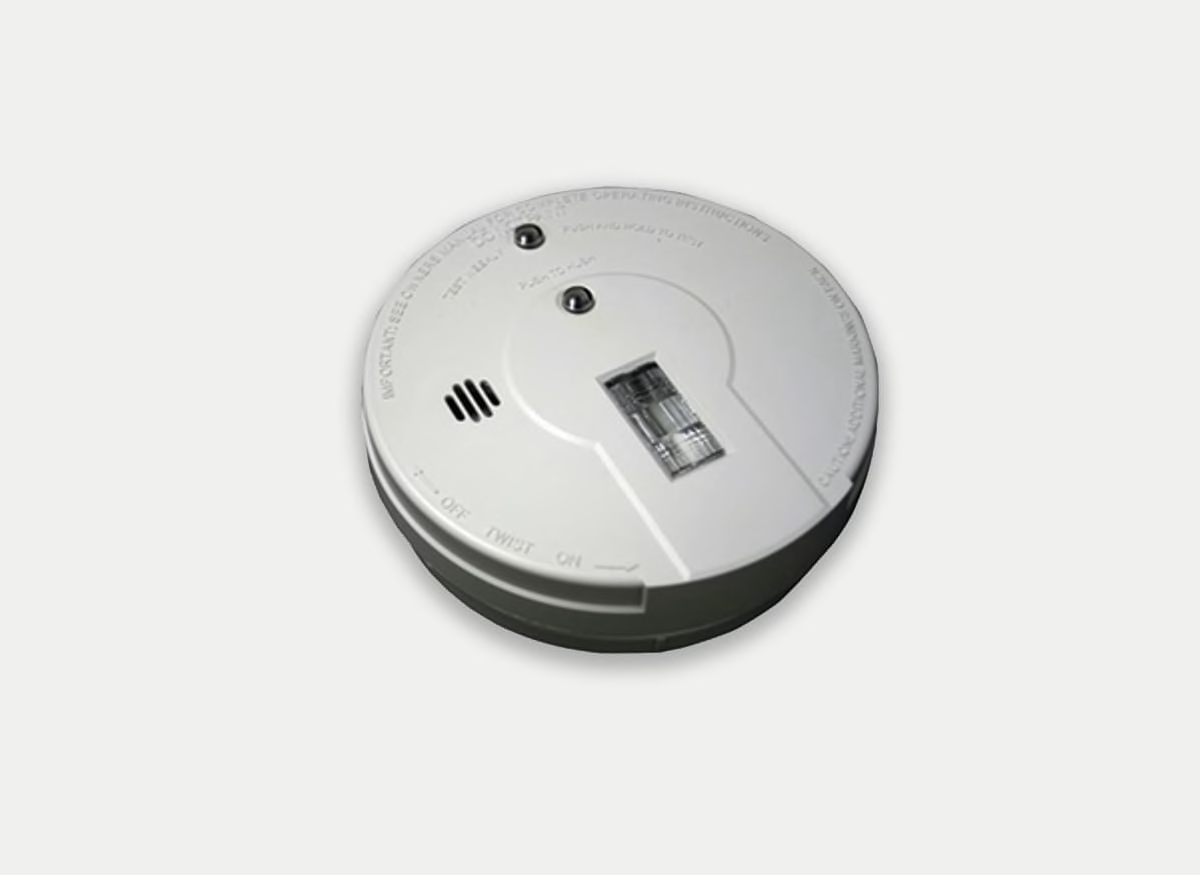
Safety and Strobe Lights
Some smoke detectors provide path illumination, a potential lifesaver in the dark. There are also alarms with strobe lights, which are the best warning for the hearing-impaired. Some smoke detectors have an integrated strobe light, and some accept add-on strobes.
Battery Backup
A backup battery for hardwired smoke and carbon monoxide detectors offers security in case of a power failure. All battery-powered smoke and carbon monoxide detectors warn you when the battery is low using warning chirps, a low-battery voice message, or a visual display.
Smartphone Alerts From Smart Detectors
Smart smoke and carbon monoxide detectors connect to smartphone apps that can alert you when detectors go off, even if you’re not home. They will also let you know when batteries are running low so that you can avoid pesky chirping.
PHOTO: NEST
Digital Carbon Monoxide Display
This feature displays carbon monoxide concentrations in parts per million, even when the concentrations are below the level that triggers the detector. Carbon monoxide detectors certified by UL Solutions must go off at no less than 70 ppm, but lower amounts may harm heart patients. The display can alert you if the carbon monoxide level is inching up or is higher than usual. Some also show the peak level since they were reset, warning you of any spikes that occurred while you were away. Expect to pay a little extra for this feature: $5 or $10 for stand-alone detectors and slightly more for smart detectors.
Hush Button
To silence a nuisance smoke detector, pressing a hush button is more convenient than disabling the unit, and it avoids the possibility of forgetting to turn it back on. All the smoke detectors we’ve recently tested have this feature. Some carbon monoxide and combination smoke/CO detectors can work with a remote control to silence a nuisance alarm (or a smartphone app, for smart detectors).
Safety and Strobe Lights
Some smoke detectors provide path illumination, a potential lifesaver in the dark. There are also alarms with strobe lights, which are the best warning for the hearing-impaired. Some smoke detectors have an integrated strobe light, and some accept add-on strobes.
Installation and Maintenance
Smoke and carbon monoxide detectors are protective only when installed correctly and if their batteries are replaced annually (unless they have a 10-year sealed lithium battery). Smoke rises, so mount smoke detectors on the ceiling or 12 inches below the ceiling on a wall. Test smoke and carbon monoxide detectors weekly and vacuum them monthly. Follow the manufacturer’s recommendations regarding battery replacement. Replace carbon monoxide detectors every five years and smoke detectors every 10 years.
Smoke & Carbon Monoxide Detector Brands
First Alert owns the BRK-branded units and the Onelink line of wireless talking units. Products include plug-in, battery, and hardwired units, as well as hardwired units with battery backup. First Alert also makes units that detect carbon monoxide and smoke, and dual-sensor units, which combine ionization and photoelectric technologies.
Kidde owns Firex-branded units and offers the Nighthawk and Silhouette lines. Nighthawk comes in plug-in and battery-operated units. The Silhouette line comes in hardwired units and features a sealed, self-charging lithium battery that lasts for the life of the unit. Kidde offers combo units, which have a smoke detector feature in addition to the carbon monoxide detector. Kidde also makes dual-sensor units that use ionization and photoelectric technologies.
The main manufacturers of smoke detectors and CO alarms are First Alert and Kidde, representing three-quarters of the market. Other manufacturers include Gentex, Google Nest, Honeywell, Panasonic, and Universal Security Instruments.
















